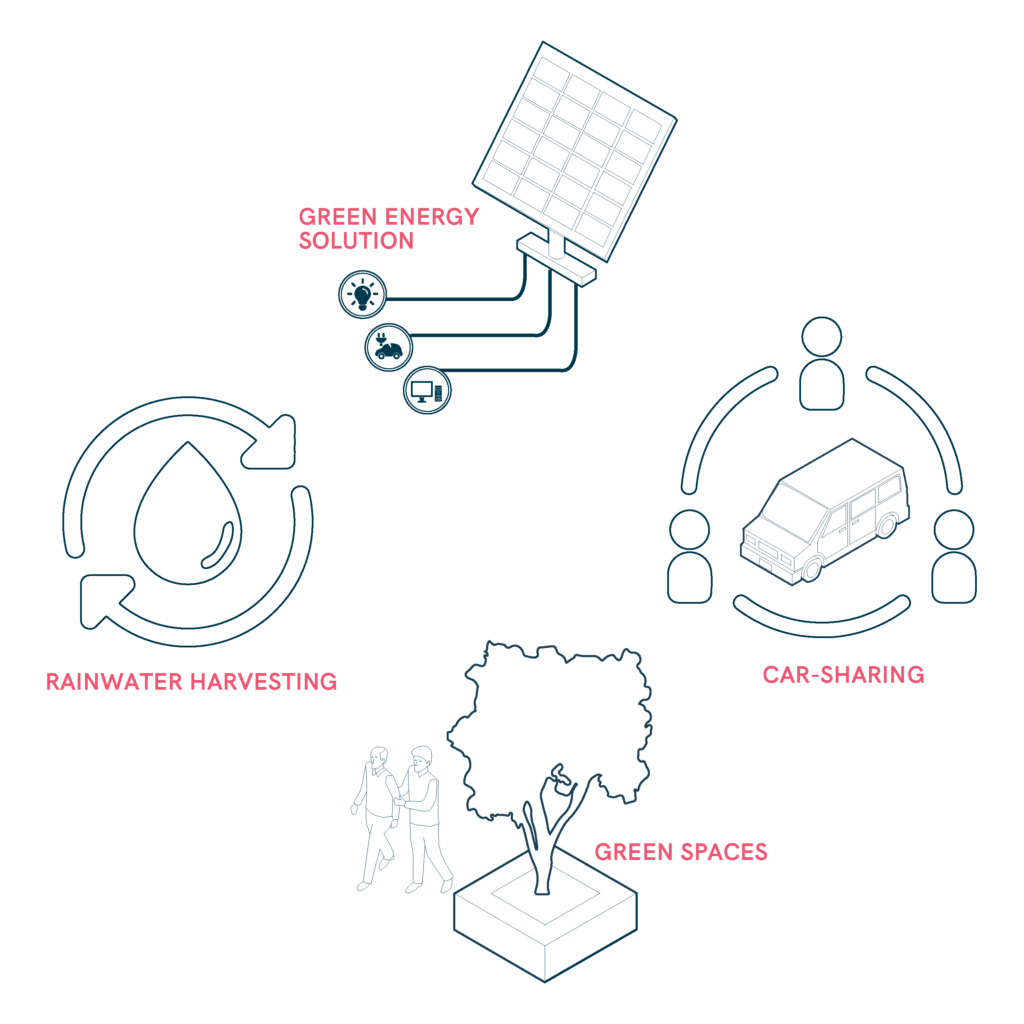Environmental Sustainability at Mobility Hubs
Creating sustainable and eco-friendly mobility hubs benefits both the environment and individuals with diverse mobility needs. Eco-friendly initiatives make these spaces more comfortable and convenient for all users.

- Implement green energy solutions (e.g., solar panels) to power mobility hub infrastructure, such as lighting and charging stations for electric vehicles and bikes.
- Use rainwater harvesting and environmentally conscious waste management systems within the hub.
- Create green spaces within the hub for passengers to relax, especially for those with mobility impairments or sensory needs.
- Encourage the use of car-sharing, bike-sharing, and other sustainable transport options by providing accessible vehicles and docking stations.
Sources
- https://accessible-eu-centre.ec.europa.eu/content-corner/digital-library/en-172102021-accessibility-and-usability-built-environment-functional-requirements_en
- https://www.iso.org/standard/71860.html
- https://www.t-l.ch/collectivites/guide-des-amenagements-pour-les-transports-publics-routiers-tl/
- https://www.leitfadenbarrierefreiesbauen.de/fileadmin/downloads/archiv/barrierefreies_bauen_leitfaden_en_bf_version2.pdf
- https://www.vitoria-gasteiz.org/http/wb021/contenidosEstaticos/especial/cea/20190917/Avance_PMSEP_2020_2030.pdf
- https://www.punt6.org/es/books/espacios-para-la-vida-cotidiana/
- Carers
- Children
- Cognitive
- Cognitive abilities
- Decolonial perspective
- Digital
- Digital barrier
- Enviroment
- Environmental
- Gender and generations
- Gender perspective
- Hearing impairment
- Low-education
- Low-income
- Older people
- Other
- Physical abilities and features
- Sensory and Physical
- Socioeconomic
- Visual impairment